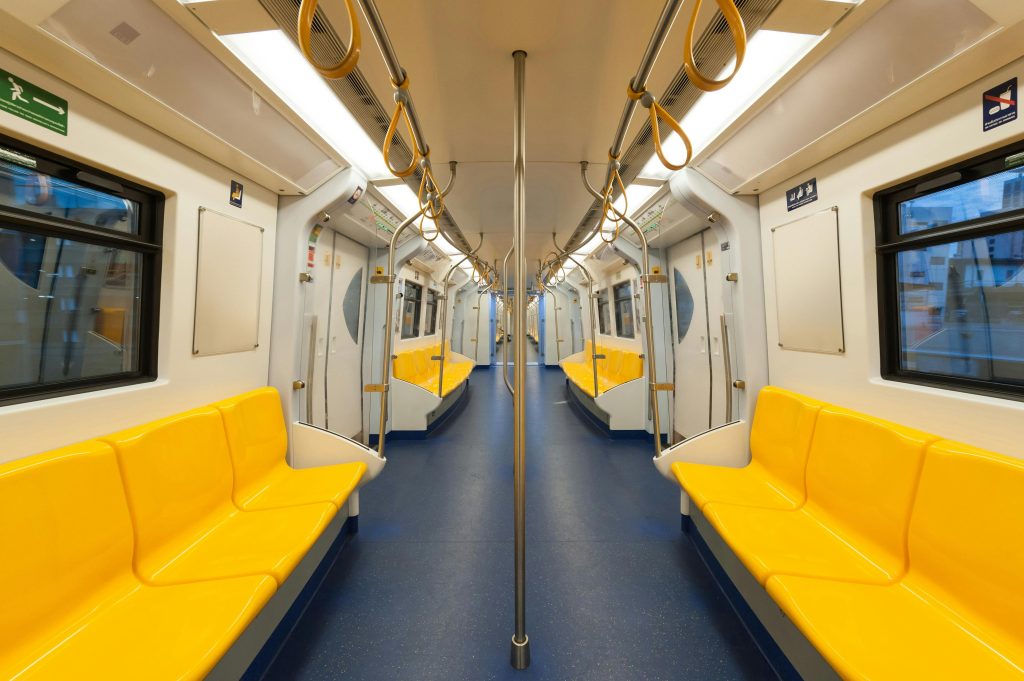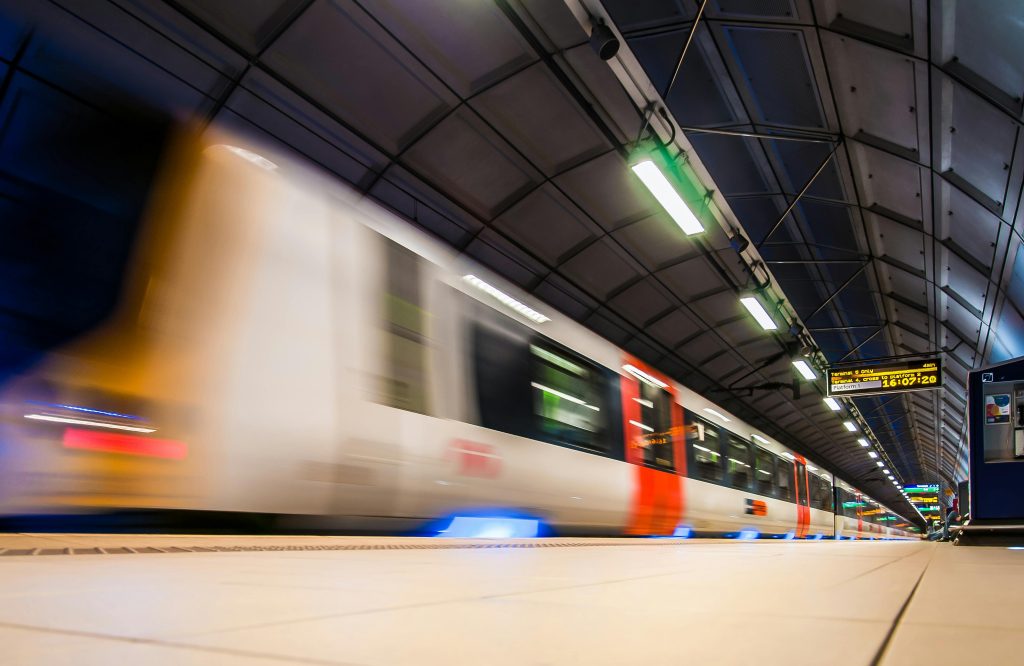
China is Developing a Levitating Train That Could Travel From New York to Chicago in Just Two Hours

Halfway to the Future: China’s 500-MPH Maglev Train and the Race to Redefine Travel
Imagine this: you grab a coffee in New York, step aboard a sleek train, and arrive in downtown Chicago before your cup has even cooled. No TSA lines. No weather delays. No turbulence—just a silent, floating ride at nearly 500 miles per hour.
It sounds like a scene from a sci-fi blockbuster. But this isn’t fiction—it’s a real-world possibility. The catch? It’s not happening in the country you’re probably picturing.
While the United States wrestles with creaking railroads and endlessly delayed infrastructure projects, China is already test-driving a levitating train so fast it could challenge commercial airliners. Using magnetic levitation—maglev—technology, this next-generation prototype has hit test speeds of up to 620 mph, rewriting the limits of what we think ground transportation can be.
Yet behind the flashy numbers lies a deeper narrative: one of technological ingenuity, political will, and a widening global infrastructure gap. As China races ahead, other nations—including the U.S.—are watching from the platform.
The Science That Makes It Fly (Without Wings)
Maglev trains operate on a principle that is elegantly simple yet fiendishly complex to engineer: magnets. Two sets are used—one to lift the train just millimeters above the guideway and another to propel it forward. Once the train accelerates to about 62–124 mph (100–200 km/h), the wheels retract, and it begins to levitate, eliminating almost all mechanical friction.
China’s latest prototype, developed by CRRC Corporation, uses high-temperature superconducting (HTS) magnets cooled to cryogenic temperatures, producing exceptionally strong and stable magnetic fields. Unlike older maglev systems, which required continuous power to maintain lift, HTS magnets are more energy-efficient and less prone to power loss.
In tests, the CRRC model has reached 650 km/h (404 mph), with engineers confident it can operate at 800 km/h (497 mph)—faster than many commercial jet cruises. For context, Japan’s legendary Shinkansen typically tops out at about 320 km/h (199 mph).
The design also addresses major drawbacks of traditional trains: reduced noise, minimal wear-and-tear, and zero direct emissions. The result is a smooth, whisper-quiet ride that aligns with climate goals without sacrificing speed.
As Professor Johannes Kluehspies, president of the International Maglev Board, puts it: “Maglev is the future. If the Chinese or Japanese succeed, it will be the end of conventional high-speed rail worldwide.”
China’s Relentless Push to the Front

The current maglev push began in 2019 with a bold announcement: a 600 km/h prototype was in development. By 2021, China rolled out a full-size train in Qingdao, openly showcased at the 12th World Congress on High Speed Rail.
Unlike other nations still running small pilot projects, China already operates the Shanghai Maglev, which has carried passengers at 431 km/h (267 mph) since 2004. Now, Beijing is eyeing long-range maglev lines—Beijing to Shanghai (over 800 miles) in just 2.5 hours.
How is this happening so fast? Political will. China’s centralized system allows rapid land acquisition, funding, and construction. While the U.S. debates environmental reviews and budget overruns, China executes projects in years, not decades.
And this isn’t just about domestic travel—China aims to export maglev technology, competing directly with Japan and Germany for lucrative global contracts.
Why Maglev Changes the Game

Conventional high-speed rail—France’s TGV, Japan’s Shinkansen—still uses steel wheels on rails, limited by friction and wear. Most max out at 300–350 km/h (186–217 mph). Maglev’s top speeds are nearly double.
For mid-range distances (300–1,300 miles), maglev could replace short-haul flights entirely. A New York–Chicago trip, for example, would take about two hours—faster than flying when airport time is factored in.
Environmentally, maglev shines. No wheel-track contact means less energy loss, lower maintenance, and drastically reduced noise pollution. When powered by renewable sources, the system’s carbon footprint is a fraction of air travel’s.
The U.S. and the Great Infrastructure Stalemate

America’s most ambitious high-speed rail project—Los Angeles to San Francisco—was once pitched as a 220 mph marvel. As of 2025, it’s years behind schedule, $128 billion over budget, and still unfinished.
A Washington, D.C.–Baltimore maglev proposal, cutting the trip to 15 minutes, has been stuck in environmental reviews and local opposition for years.
The same pattern repeats worldwide. Japan’s Chūō Shinkansen, designed to connect Tokyo and Osaka via superconducting maglev at 500 km/h, has been delayed by at least five years over environmental disputes. Germany abandoned its Transrapid maglev after a fatal 2006 test accident and high costs—only for China to absorb and advance the core technology.
What Maglev Could Mean for America
If the U.S. embraced maglev, it could transform geography as we know it. Major cities could merge into economic “mega-regions,” smaller cities along the routes could see revitalization, and commutes could be slashed to minutes.
Imagine: a consultant lives in Philadelphia, meets a client in New York in the morning, works from a café in D.C. in the afternoon, and is home for dinner—all without boarding a plane.
Tourism, housing affordability, and regional growth could all benefit. But maglev requires entirely new guideways—not retrofitting old rail lines. That means high upfront costs, complex land-use negotiations, and rare political unity.
The Road—or Track—ahead

China’s maglev hitting 620 mph is more than a record—it’s proof that near-aircraft-speed land travel is possible today. Whether the rest of the world catches up depends on:
-
Cost Acceptance – Upfront billions versus decades of savings in maintenance and emissions.
-
Political Will – Democracies must navigate fragmented authority.
-
Global Standards – EDS vs. EMS technology competition still unresolved.
-
Market Fit – Targeting the sweet spot between flights and slow trains.
Elon Musk’s Hyperloop once promised an even bolder leap—but with Hyperloop One’s 2023 bankruptcy, maglev stands as the most viable ultra-speed ground technology in the near term.
The Bigger Question
China’s maglev is not just about trains—it’s a symbol of how infrastructure ambition reflects national priorities. The technology exists. The climate benefits are proven. The travel time savings are staggering.
What’s missing, in many countries, is the will to think beyond election cycles and act on a vision measured in decades, not quarters.
The train hasn’t just left the station—it’s already halfway to the future. The only question is: will the rest of the world get onboard, or be left watching as it disappears over the horizon?
News in the same category


The Truth About Eating the Black Vein in Shrimp Tails

This is why you should keep the bathroom light on when sleeping in a hotel
Leaving your hotel bathroom light on at night might seem unnecessary, but it could be a small habit that makes a big difference for your comfort and safety. From preventing nighttime accidents to deterring intruders, experts say this simple tip can protec

The Mystical Gaboon Viper, Master Of Disguise And Deadly Accuracy

If You See Square Waves Forming In The Ocean, Get Out Of The Water Immediately

A Greenland Shark Born in 1620 is Still Alive Four Centuries Later

15 Things You Should Never Plug Into A Power Strip

TikTok’s ‘Vabbing’ Trend Sparks Debate: Does It Attract Partners?

In Sweden, You’re Not Allowed to Leave Your Dog Alone for More Than Six Hours, Here’s the Reason

A A tendon raises up when you touch your pinky to your thumbraises up when you touch your pinky to your thumb

The Hidden Meaning Behind Leg-crossing — It’s More Than Just Comfort

The Sh0cking Truth Behind Your Ankle Bracelet And What It Reveals About You — It’s More Than Just Jewelry
For many, an ankle bracelet is just a delicate, eye-catching piece of jewelry. But behind its shimmer lies a rich tapestry of history, tradition, and hidden symbolism that stretches across cultures and centuries.

Lost Underwater City Near Noah’s Ark Site Could Rewrite Biblical History Forever
The discovery of an underwater city found by the 'resting place of Noah's Ark' is a revelation that may lead to the Bible story being re-written.

11 Heartbreaking Yet Essential Signs Your Dog May Be Nearing the End — And How to Give Them Comfort Until the Last Moment
When you notice these signs, your role transforms from caregiver to emotional anchor. This is the time to be fully present — offering touch, reassurance, and unconditional love.

Harvard Professor Warns: Object Heading Toward Earth Could Be Something Beyond Nature
A massive interstellar object, 3I/ATLAS, is racing toward Earth, and one Harvard astrophysicist believes it may not be natural. With missing comet features and a suspicious trajectory, experts are now debating whether it could be an engineered spacecraft.

Mass Panic as ‘New Baba Vanga’ Predicts Majo Disasters Striking in Just One Month
A chilling prophecy from Japan’s so-called “New Baba Vanga” has triggered widespread fear and mass trip cancellations. Tourists are now abandoning travel plans as the forecast warns of a catastrophic natural disaster hitting in early July 2025.

What Is SPAM Meat? History, Origin, Ingredients, and How It Became a Global Food Icon
SPAM — the world-famous canned meat — has been sold over 8 billion times and is loved in more than 40 countries. From its humble beginnings during the Great Depression to its role in World War II, here’s the complete story of SPAM’s origin, ingred

Scientists Reverse Aging of a 53-Year-Old’s Skin Cells to That of a 23
News Post

Experts warn: Don’t swap your oven for an air fryer

Get Rid of Throat Mucus Faster With These Home Treatments (Evidence Based)

Clear Throat Mucus Fast With These Tried-and-Tested Remedies They Don’t Want You to Know

9 Warning Signs of Magnesium Deficiency You Shouldn't Ignore

Poor Postcancer Surgery Outcomes Tied to 3 Factors

Teamwork Boosts Primary Care Doc Job Satisfaction, Cuts Stress

HIV Was Successfully Eliminated from Human Immune Cells Using CRISPR Gene Editing in Landmark Study

Scientists Discover An “Off Switch” For Cholesterol—And It Could Save Millions Of Lives

How to Treat Urinary Tract Infection (UTI) Naturally According to Science

4 Common Causes of Body Pain on the Right Side

The Truth About Eating the Black Vein in Shrimp Tails

12 Subtle Vitamin D Deficiency Symptoms That Most People Ignore

What Your Heart Experiences When You Drink Energy Drinks

How to Eat Right for Your Blood Type

Eyes Full of Hope, Heart Full of Trust.

When to Worry About Veins That Appear Out of Nowhere

This is what sleeping on the left side does for our brain, stomach & glymphatic health
Sleeping position might be the last thing you think about before bed, but it can have a powerful impact on your health. Experts say that lying on your left side could improve digestion, support brain detox, ease back pain, and even enhance circulation.

I Haven’t Seen My Daughter in 13 Years — Then a Letter Arrived from a Grandson I Never Knew

This is why you should keep the bathroom light on when sleeping in a hotel
Leaving your hotel bathroom light on at night might seem unnecessary, but it could be a small habit that makes a big difference for your comfort and safety. From preventing nighttime accidents to deterring intruders, experts say this simple tip can protec
